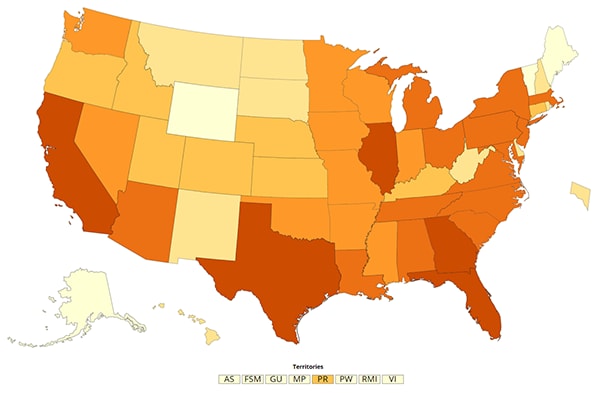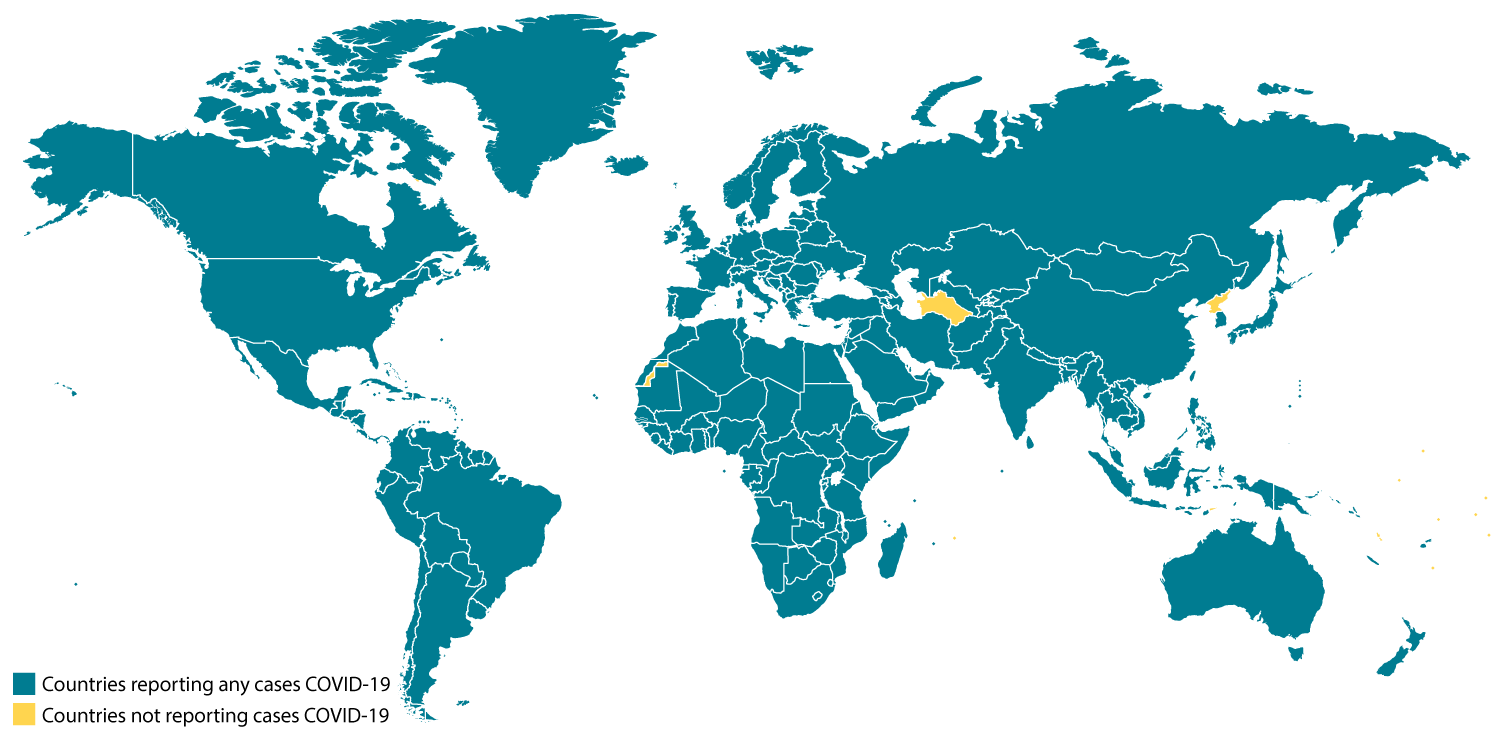2019 Novel Coronavirus (2019-nCoV) Situation Summary
This is an emerging, rapidly evolving situation and CDC will provide updated information as it becomes available, in addition to updated guidance.
Updated February 1, 2020
Background
CDC is closely monitoring an outbreak of respiratory illness caused by a novel (new) coronavirus (named “2019-nCoV”) that was first detected in Wuhan City, Hubei Province, China and which continues to expand. Chinese health officials have reported thousands of infections with 2019-nCoV in China, with the virus reportedly spreading from person-to-person in many parts of that country. Infections with 2019-nCoV, most of them associated with travel from Wuhan, also are being reported in a growing number of international locations, including the United States. The United States reported the first confirmed instance of person-to-person spread with this virus on January 30, 2020.
On January 30, 2020, the International Health Regulations Emergency Committee of the World Health Organization declared the outbreak a “public health emergency of international concern” (PHEIC). On January 31, 2020, Health and Human Services Secretary Alex M. Azar II declared a public health emergency (PHE) for the United States to aid the nation’s healthcare community in responding to 2019-nCoV. Also on January 31, the President of the United States signed a presidential “Proclamation on Suspension of Entry as Immigrants and Nonimmigrants of Persons who Pose a Risk of Transmitting 2019 Novel Coronavirus“. These measures were announced at a press briefing by members of the President’s Coronavirus Task Force.
Coronaviruses are a large family of viruses that are common in many different species of animals, including camels, cattle, cats, and bats. Rarely, animal coronaviruses can infect people and then spread between people such as with MERS, SARS, and now with 2019-nCoV.
Source and Spread of the Virus
Chinese health authorities were the first to post the full genome of the 2019-nCoV in GenBank, the NIH genetic sequence database, and in the Global Initiative on Sharing All Influenza Data (GISAID) portal, an action which has facilitated detection of this virus. CDC is posting the full genome of the 2019-nCoV viruses detected in U.S. patients to GenBank as sequencing is completed.
2019-nCoV is a betacoronavirus, like MERS and SARs, all of which have their origins in bats. The sequences from U.S. patients are similar to the one that China initially posted, suggesting a likely single, recent emergence of this virus from an animal reservoir.
Early on, many of the patients in the outbreak of respiratory illness caused by 2019-nCov in Wuhan, China had some link to a large seafood and live animal market, suggesting animal-to-person spread. Later, a growing number of patients reportedly did not have exposure to animal markets, indicating person-to-person spread. Chinese officials report that sustained person-to-person spread in the community is occurring in China. Person-to-person spread has been reported outside China, including in the United States and other countries. In addition, cases asymptomatic spread of the virus have been reported. Learn what is known about the spread of newly emerged coronaviruses.
Situation in U.S.
Imported cases of 2019-nCoV infection in people have been detected in the U.S. While person-to-person spread among close contacts has been detected with this virus, at this time this virus is NOT currently spreading in the community in the United States.
On This Page
2019-nCoV in the U.S.
Confirmed 2019-nCoV Cases Globally
Illness Severity
Both MERS and SARS have been known to cause severe illness in people. The complete clinical picture with regard to 2019-nCoV is still not fully clear. Reported illnesses have ranged from infected people with little to no symptoms to people being severely ill and dying. Learn more about the symptoms associated with 2019-nCoV.
There are ongoing investigations to learn more. This is a rapidly evolving situation and information will be updated as it becomes available.
Risk Assessment
Outbreaks of novel virus infections among people are always of public health concern. The risk from these outbreaks depends on characteristics of the virus, including whether and how well it spreads between people, the severity of resulting illness, and the medical or other measures available to control the impact of the virus (for example, vaccine or treatment medications).
This is a very serious public health threat. The fact that this virus has caused severe illness and sustained person-to-person spread in China is concerning, but it’s unclear how the situation in the United States will unfold at this time.
The risk to individuals is dependent on exposure. At this time, some people will have an increased risk of infection, for example healthcare workers caring for 2019-nCoV patients and other close contacts. For the general American public, who are unlikely to be exposed to this virus, the immediate health risk from 2019-nCoV is considered low. The goal of the ongoing U.S. public health response is to prevent sustained spread of 2019-nCov in this country.
What to Expect
More cases are likely to be identified in the coming days, including more cases in the United States. It’s also likely that person-to-person spread will continue to occur, including in the United States.
CDC Response
- CDC is closely monitoring this situation and is working with WHO and state and local public health partners to respond to this emerging public health threat.
- The goal of the ongoing U.S. public health response is to prevent sustained spread of 2019-nCov in this country.
- CDC established a 2019-nCoV Incident Management Structure on January 7, 2020. On January 21, 2020, CDC activated its Emergency Operations Center to better provide ongoing support to the 2019-nCoV response.
- On January 27, 2020, CDC issued updated travel guidance for China, recommending that travelers avoid all nonessential travel to all of the country (Level 3 Travel Health Notice).
- CDC and Customs and Border Protection (CBP) are continuing to conduct enhanced entry screening of passengers who have been in Wuhan within the past 14 days at 5 designated U.S. airports. Given travel out of Wuhan has been shut down, the number of passengers who meet this criteria are dwindling.
- Going forward, CBP officials will monitor for travelers with symptoms compatible with 2019-nCoV infection and a travel connection with China and will refer them to CDC staff for evaluation at all 20 U.S. quarantine stations.
- At the same time, ALL travelers from China will be given CDC’s Travel Health Alert Notice, educating those travelers about what to do if they get sick with certain symptoms within 14 days after arriving in the United States.
- On January 31, 2020, the White House 2019 Novel Coronavirus Task Force held a press conference to announce the implementation of new travel policies to be effective at 5:00 p.m. eastern standard time on February 2, 2020. See “Proclamation on Suspension of Entry as Immigrants and Nonimmigrants of Persons who Pose a Risk of Transmitting 2019 Novel Coronavirus”.
- CDC issued an updated interim Health Alert Notice (HAN) Advisory to inform state and local health departments and health care providers about this outbreak on February 1, 2020.
- On January 30, 2020, CDC published guidance for healthcare providers on the clinical care of 2019-nCov patients.
- CDC has deployed multidisciplinary teams to Washington, Illinois, California, and Arizona to assist health departments with clinical management, contact tracing, and communications.
- CDC has developed a real time Reverse Transcription-Polymerase Chain Reaction (rRT-PCR) test that can diagnose 2019-nCoV in respiratory and serum samples from clinical specimens. On January 24, 2020, CDC publicly posted the assay protocol for this test. Currently, testing for this virus must take place at CDC, but in the coming days and weeks, CDC will share these tests with domestic and international partners through the agency’s International Reagent Resource.
- CDC uploaded the entire genome of the virus from all five reported cases in the United States to GenBank.
- CDC also is growing the virus in cell culture, which is necessary for further studies, including for additional genetic characterization.
CDC Recommends
While the immediate risk of this new virus to the American public is believed to be low at this time, everyone can do their part to help us respond to this emerging public health threat:
- For everyone: It’s currently flu and respiratory disease season and CDC recommends getting vaccinated, taking everyday preventive actions to stop the spread of germs, and taking flu antivirals if prescribed.
- For healthcare professionals:
- Be on the look-out for people with travel history to China and fever and respiratory symptoms.
- If you are a healthcare professional caring a 2109-nCoV patient, please take care of yourself and follow recommended infection control procedures.
- For people who may have 2019-nCoV infection: Please follow CDC guidance on how to reduce the risk of spreading your illness to others.
- For travelers: Stay up to date with CDC’s travel health notices related to this outbreak.
Other Available Resources
The following resources are available with information on 2019-nCoV
- CDC Travelers’ Health: Novel Coronavirus in China
- CDC Health Alert Network Advisory Update and Interim Guidance on Outbreak of 2019 Novel Coronavirus (2019-nCoV)
- CDC Health Alert Network Advisory Update and Interim Guidance on Outbreak of 2019 Novel Coronavirus (2019-nCoV) in Wuhan, China
- CDC Health Alert Network Advisory information for state and local health departments and health care providers
- CDC Information on Coronaviruses
- World Health Organization, Coronavirus























.png)










No hay comentarios:
Publicar un comentario